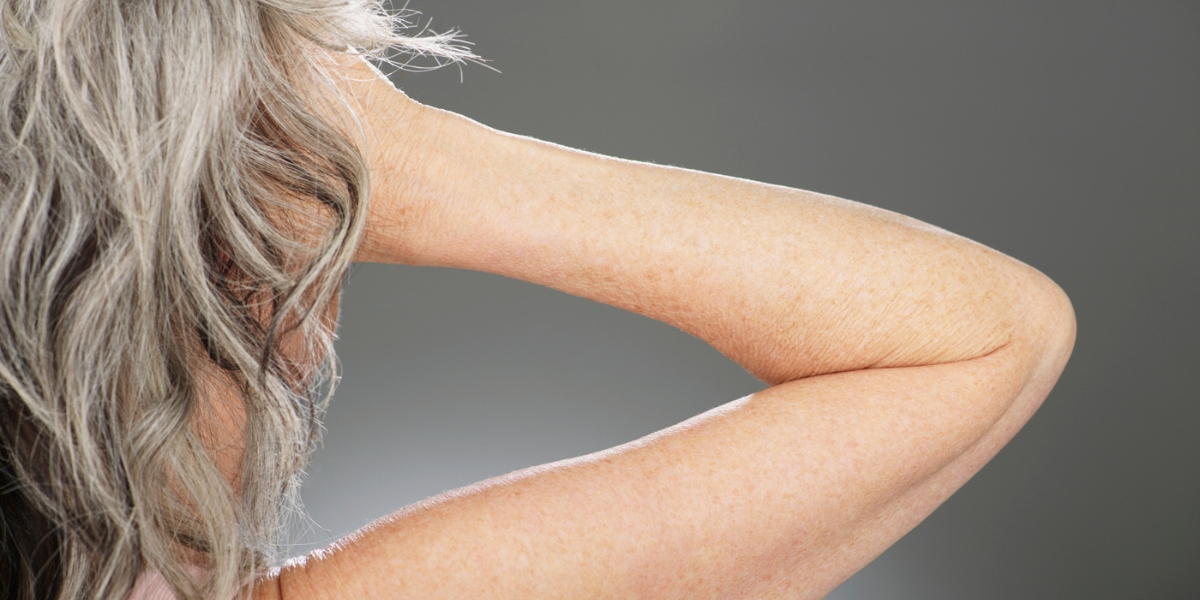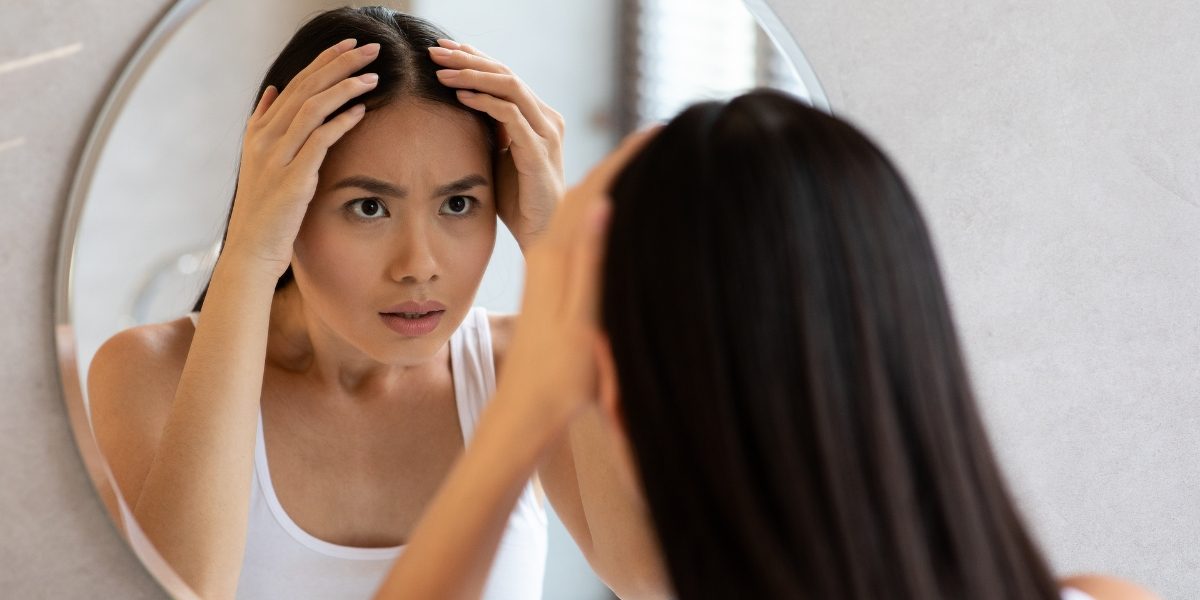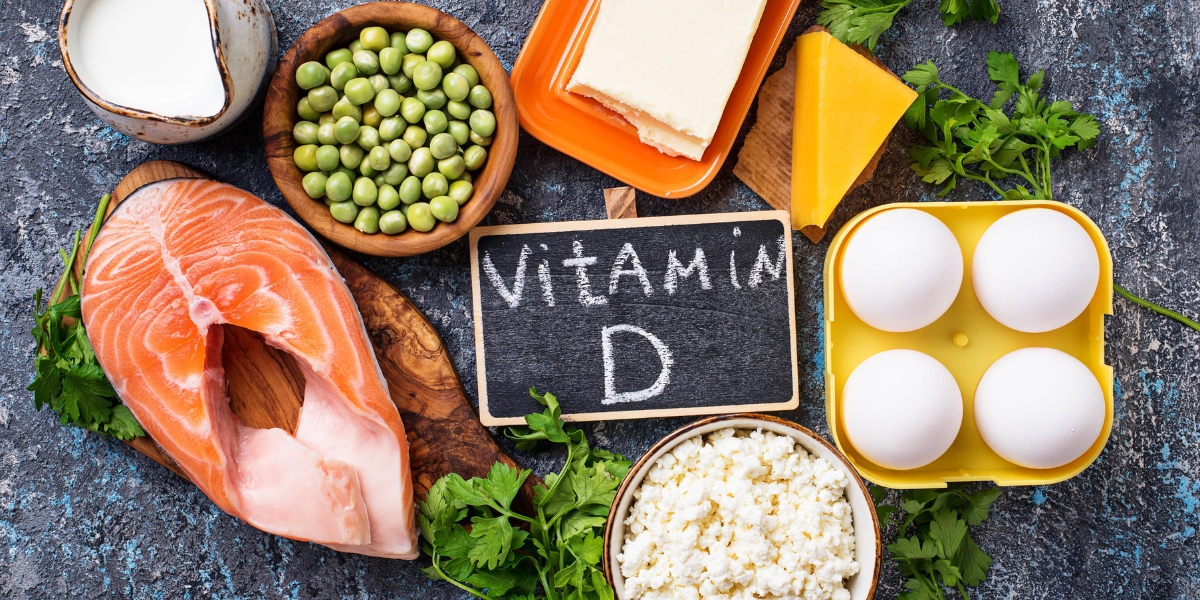Blog
Gray Hair: Causes and Ways to Care for It Naturally in 2025

You’re not the Queen of Dragons or an elderly wizard, so why is your hair already turning white? If it feels like you woke up one day and locked eyes with Gandalf the White in your mirror, don’t panic. Not only can you cover the white with hair dye, but depending on what’s causing it, you may also be able to prevent or reverse it.
Another viable option: You can own it. Graying is a natural aging process, but do you know what exactly causes gray hair? And is there a way to reverse the process naturally? How to reverse gray hair?
Gray hair is a common phenomenon that affects many people as they age, and increasingly, even younger individuals are experiencing this change. In Pakistan, where beauty and personal care are highly valued, understanding the causes of gray hair and learning natural ways to care for it can be particularly useful.
Let’s get to the root of gray hair and learn the different ways to deal with premature aging. This comprehensive guide will delve into the causes of gray hair, explore effective natural remedies, and provide practical tips for maintaining healthy, vibrant hair.
Is Gray hair normal?
It’s not uncommon for your hair to change as you get older. As a younger person, maybe you had a full head of brown, black, red, or blonde hair. Now that you’re older, you may notice thinning in certain areas of your head, or your hair may change from its original color to gray or white.
Your body has hair follicles, which are small sacs that line skin cells. Hair follicles have pigment cells known as melanin. These cells give your hair its color. But over time, hair follicles can lose pigment, resulting in white hair.
What Causes Gray Hair?
Gray hair results from a natural process where the pigment cells in the hair follicles gradually lose their ability to produce melanin, the substance responsible for hair color.
Here are the primary causes:
1. Aging
Aging is the most common cause of gray hair. As people age, the melanocytes (pigment cells) in their hair follicles gradually decrease in number.
According to a study published in Nature Reviews Molecular Cell Biology, the reduction in melanocyte activity leads to a reduction in melanin production, causing hair to lose its color and turn gray or white.
2. Genetics
Genetics plays a significant role in when and how early someone will go gray. If your parents or grandparents experienced early graying, you might be predisposed to it as well. Research shows that geography, race, and ethnicity also impact graying.
According to a 2017 study, there is a strong family history and genetic component to premature hair graying. Race and ethnicity play a role, as well. Premature graying in white people can start as early as 20 years old, while a person can be as young as 25 years old among Asian people and 30 years old in African-American populations, according to a 2013 study.
3.Vitamin Deficiencies
Deficiencies in certain vitamins and minerals, such as B12, D, E, Biotin, iron, and zinc, can contribute to premature graying. A study published in the Journal of Dermatology highlighted that vitamin B12 deficiency is linked to early graying, emphasizing the importance of a balanced diet.
4. Stress
- Chronic stress – has been linked to premature graying. The impact of stress on the body can disrupt normal physiological processes, including those affecting hair pigmentation. A study in Nature Communications found that stress-induced changes in the sympathetic nervous system could impact hair pigmentation.
- Oxidative stress – Oxidative stress is when there is an imbalance between your body’s antioxidants and free radicals. A large amount of free radicals damages the cells and contribute to premature graying. Factors like obesity, smoking tobacco, high alcohol consumption, and exposure to environmental aggressors increase your risk of long-term oxidative stress.
- Emotional stress – Psychological or emotional stress are believed to deplete the stem cells in the hair follicles, which, in turn, causes premature graying.
5. Health Conditions
Certain health conditions, such as autoimmune diseases and thyroid disorders, can also cause premature graying. Conditions like vitiligo, where the immune system attacks pigment cells, can lead to loss of hair color.
6. Chemical hair dyes and hair products
Chemical hair dyes and hair products, even shampoos, can contribute to premature hair graying. Many of these products contain harmful ingredients that decrease melanin. Hydrogen peroxide, which is in many hair dyes, is one such harmful chemical. Excessive use of products that bleach hair will also eventually cause it to turn white.
7. Thyroid disorder
Hormonal changes caused by a thyroid problem — such as hyperthyroidism or hypothyroidism — may also be responsible for premature white hair. The thyroid is a butterfly-shaped gland located at the base of your neck. It helps control many bodily functions such as metabolism. The health of your thyroid can also influence the color of your hair. An overactive or underactive thyroid can cause your body to produce less melanin.
Lifestyle changes as a solution for gray hair
While the genetic aspect of our hair-graying process is out of our hands (thanks, Mom and Dad), a few simple lifestyle shifts can help you hold on to your hued hair longer, experts say.
“A healthy diet and lifestyle is not only good for your overall well-being but also for your skin and hair health,” says Latin.
Study up on scientifically proven strategies to prevent or slow the graying process.
1. Adjust Your Diet
On a related note, what you eat can be pro-inflammatory or anti-inflammatory, says Upton.
Eating a diet that can help tamp down inflammation may help protect the cells responsible for your hair’s pigment. A diet that is rich in added sugars, processed foods and saturated fat is known to be pro-inflammatory. A plant-based eating plan that’s low in added sugar and light on high-fat animal proteins is considered anti-inflammatory.
With that in mind, Upton suggests that her inflammation-savvy clients eat more antioxidant-rich fruits and veggies, which can help neutralize the reactions that negatively impact the cells that are responsible for maintaining the pigment in your hair follicles.
Some of the best options include:
- Berries
- Dark, leafy greens
- Red grapes
- Fresh herbs and spices
If possible, limit these pro-inflammatory foods and drinks:
- Soda and other sugar-sweetened beverages
- Candy
- Commercial baked goods
- Processed, high-fat meats like bacon, sausage
2. Get Enough of These Vitamins and Minerals
Certain vitamin and mineral shortfalls can also contribute to graying hair. Ensure you have an adequate level of vitamin D3 and vitamin B12, since deficiencies in either of these may accelerate graying.
Other important micronutrients for healthy hair include vitamin E, vitamin A, zinc, iron, copper, selenium and magnesium.
While supplements can fill in the gaps, the best sources of these healthy hair nutrients include:
- Vitamin D: trout, salmon, mushrooms, milk, eggs
- Vitamin B12: beef liver, clams, tuna, nutritional yeast, salmon
- Vitamin E: sunflower seeds and oil, almonds, hazelnuts, peanuts, spinach
- Vitamin A: beef liver, sweet potatoes, spinach, carrots, ricotta cheese, cantaloupe
- Zinc: oysters, beef chuck roast, crab, lobster, pork loin, baked beans
- Iron: beef, dark leafy greens, fortified cereals, oysters, white beans, dark chocolate, lentils
- Copper: beef liver, oysters, unsweetened chocolate, potatoes, shiitake mushrooms
- Selenium: Brazil nuts, tuna, halibut, sardines, shrimp
- Magnesium: pumpkin seeds, chia seeds, almonds, spinach, cashews
3. Protect Your Locks from the Elements
Beyond internal impacts, what your hair faces externally matters too. Follow healthy hair habits. Try to avoid repetitive use of heat and chemical treatments which can damage the hair and the pigment cells. Limit exposure to, or protect hair from, toxins and pollutants, and when possible, protect your hair from the sun by covering it up with a hat or scarf.
Banning bleaches, using a wide-toothed comb (rather than a brush, especially on wet hair), limiting high-heat styling tools and washing less frequently can all help your hair stay stronger longer.
Additionally, if you’re struggling with issues like dandruff, which can also affect hair health and potentially contribute to gray hair, check out our article on Dandruff and Hair Loss for more information and tips.
4. Stay Up to Date with Your Check-Ups
Some autoimmune and thyroid-related disorders can be related to premature graying, according to a 2018 review in the International Journal of Trichology. Be sure to keep up with your yearly physicals and check in with our primary care practitioner if anything feels “off” internally, or book an appointment with your dermatologist if you notice any big changes in the vitality of your skin or hair.
5. Combat oxidative stress through your diet
Adding foods to your fridge that are brimming with antioxidants can help reduce oxidative stress. Gooseberry is a tiny, nutritious fruit known for its high antioxidant content that can help battle oxidative stress.
6. Stop smoking and try to limit stress
There’s no evidence your natural hair color will come back if you quit the cigs. But stopping these behaviors entirely can help prevent more white hairs.
7. Be nicer to your hair
Stop washing your hair so often (seriously — here’s an excuse not to shower every day). Over washing your hair can actually damage it. And be mindful of the products you use to wash, dye, and style your hair. Bleaching and harsh shampoos can lead to damage and early white hairs.
Natural Ways to Care for Gray Hair
Taking care of gray hair naturally involves using remedies and practices that can help maintain the health and appearance of your hair without relying on harsh chemicals. Here are some effective natural ways to care for gray hair:
1. Amla
Amla is renowned for its high vitamin C content and antioxidant properties. It is believed to help prevent premature graying by nourishing the hair and promoting melanin production. According to a study published in Phytotherapy Research, amla has beneficial effects on hair health.
How to Use: You can apply amla oil to your scalp and hair or use amla powder in your hair mask.
2. Henna
Henna is a natural dye that can add a reddish-brown color to gray hair. It not only covers gray strands but also conditions and strengthens the hair. Journal of Cosmetic Dermatology notes that henna has been used traditionally for hair coloring and conditioning.
How to Use: Mix henna powder with water and apply it to your hair. Leave it on for 1-2 hours before rinsing.
3. Coconut Oil
Coconut oil is rich in fatty acids and vitamins that nourish the scalp and hair. It helps maintain hydration and can prevent dryness, which is common in gray hair.
How to Use: Massage warm coconut oil into your scalp and hair. Leave it on for at least an hour or overnight before washing it out.
4. Rosemary Oil
Rosemary oil is known for its ability to stimulate hair growth and improve scalp health. It can also help in darkening gray hair and improving its texture. A study in International Journal of Biotechnology suggests that rosemary oil has potential benefits for hair health.
How to Use: Mix a few drops of rosemary oil with a carrier oil like olive or coconut oil. Massage it into your scalp and leave it on for at least 30 minutes before rinsing. You can also explore more about natural hair care in our article on Rose Water and Hair.
5. Black Sesame Seeds
Black sesame seeds are believed to help in reversing gray hair due to their high content of essential nutrients and antioxidants. Traditional medicine often uses them to maintain hair color.
How to Use: Consume black sesame seeds regularly as part of your diet or mix them with honey and consume it.
6. Green Tea
Green tea contains antioxidants that can help maintain overall hair health and may prevent premature graying. *Journal of Nutritional Biochemistry* highlights the benefits of green tea polyphenols in hair health.
How to Use: Drink green tea daily or use it as a hair rinse after brewing.
7. Beetroot Juice
Beetroot juice is rich in vitamins and minerals that can enhance the health and color of your hair. It also helps in improving blood circulation to the scalp.
How to Use: Drink beetroot juice regularly or use it as a hair mask by mixing it with other ingredients like yogurt.
8. Ginger
Every day, eat a teaspoon of fresh grated ginger mixed with 1 tablespoon of honey.
9. Blackstrap molasses
Every other day, eat a tablespoon of blackstrap molasses (from sugarcane juice, not from beet sugar); it’s believed to reverse the graying process.
10. Ghee
Twice a week, massage your hair and scalp with pure ghee (clarified butter).
11. Wheatgrass juice
Drink one to two ounces of fresh wheatgrass juice every day or add 1 tablespoon of wheatgrass powder daily to your soups and smoothies.
12. Fo-ti
In traditional Chinese medicine, fo-ti is taken internally as a supplement — 1,000 milligrams two times per day with food — to reverse the graying hair process.
13. Onion
Blend an onion in a blender and then use a strainer so that you’re left with the juice. Twice a week, rub this juice into your scalp, leaving it in place for 30 minutes and then shampooing as usual.
14. Carrot juice
Drink 8 ounces of carrot juice every day.
15. Catalase
Catalase is another powerful antioxidant that has been shown to prevent gray and white hairs. Eat foods rich in the enzyme catalase such as:
- garlic
- cabbage
- sweet potato
- kale
- broccoli
- almonds
16. Curry leaves
Make a paste of ¼ cup of curry leaves and ½ cup of yogurt. Apply it to your hair and scalp and then wash it off after 30 minutes. Repeat two to three times a week.
17. Almond oil
Mix together equal parts of almond oil, lemon juice, and amla juice. Massage the mixture into your hair and scalp. Follow this routine two times a day for three months.
Natural hair dye
You can make your own hair dye with various herbs. Since this type of hair dye isn’t as strong as commercially available chemical dyes, the dying process must be repeated a number of times before you see change. Suggested primary ingredients include:
- blonde hair: chamomile flower tea, lemon peel, saffron, marigold flower
- red hair: beet juice, carrot juice, rose petals,
- brown hair: coffee, cinnamon
- black hair: black walnut, black tea, sage, nettle
Some hair dye recipes suggested by advocates of natural cosmetics include:
- Torai ridged gourd: Boil torai in coconut oil until it turns black (about four hours). When it cools down, massage a small amount into your scalp and hair. After 45 minutes, wash it out of your hair. Repeat two to three times a week.
- Bhringraj: In a small pan over low heat, mix 1 teaspoon of bhringraj and 2 tablespoons of coconut oil. Rub the warm mixture into your hair and scalp. Wash it out after one hour. Repeat two to three times a week.
- Black pepper: Mix 1 tablespoon of freshly ground black pepper and 1 teaspoon of fresh lemon juice into ½ cup of plain yogurt. Massage the mixture into your hair, leaving it in place for 1 hour and then rinsing it out. Repeat three times per week.
- Henna: Mix enough henna powder into one cup of black tea or coffee to make a paste with the consistency of yogurt. Cover the bowl and let it sit. After six hours mix in 2 tablespoons of extra virgin olive oil and then apply the mixture to your hair. Rinse it off after 1 to 3 hours, depending on the depth of color you want.
Practical Tips for Maintaining Healthy Gray Hair
In addition to using natural remedies, adopting certain practices can help keep your gray hair looking its best:
1. Stay Hydrated
Drinking plenty of water is essential for maintaining hair health. Proper hydration helps keep your hair moisturized and prevents dryness.
2. Use Mild Shampoos
Opt for shampoos that are free from harsh chemicals and sulfates. Gentle, moisturizing shampoos are best for maintaining the health of gray hair.
3. Condition Regularly
Conditioning helps to keep gray hair soft and manageable. Use a conditioner that provides adequate moisture and nourishment.
4. Protect from Sun Damage
Gray hair is more susceptible to UV damage. Use hats or UV-protectant hair products to shield your hair from excessive sun exposure.
5. Avoid Heat Styling
Excessive use of heat styling tools can lead to dryness and damage. Minimize the use of hair dryers, straighteners, and curling irons.
6. Regular Trims
Regular trims help to keep your hair looking neat and prevent split ends. Aim for a trim every 6-8 weeks.
Conclusion
Gray hair is a natural part of aging, but understanding its causes and exploring natural care options can help you manage it effectively. Gray hair is a natural part of aging, but understanding its causes and exploring natural care options can help you manage it effectively. If you’re curious to know how old are you in years, months, days and seconds, use this instant age calculator!
By incorporating remedies like amla, henna, and coconut oil, and following practical hair care tips, you can maintain healthy and vibrant gray hair.
Take Action Today! Start incorporating these natural remedies and care tips into your routine to keep your gray hair looking its best. For more information on beauty and hair care products, visit (https://revol.pk). Embrace your natural beauty and enjoy the journey with confidence!
Feel free to reach out with any questions or for further assistance in achieving your hair care goals. Your beautiful, healthy hair awaits!
This article was written by Zahra Latif, a specialist in beauty and hair care tips.
What is the primary cause of gray hair?
Gray hair is primarily caused by a reduction in melanin production in the hair follicles as a result of aging and genetic factors.
Can stress cause gray hair?
Yes, chronic stress can contribute to premature graying due to its impact on physiological processes and pigment cells.
How can I naturally cover gray hair?
You can use natural dyes like henna or amla, and consume foods like black sesame seeds that may help in maintaining hair color.
Is it possible to reverse gray hair naturally?
While natural remedies can help improve hair health and possibly slow the graying process, there is no proven method to fully reverse gray hair.
What are the best oils for gray hair?
Coconut oil and rosemary oil are excellent choices for nourishing and maintaining gray hair.
How often should I use coconut oil on my hair?
You can use coconut oil 1-2 times a week to keep your hair moisturized and healthy.
Can I use green tea as a hair rinse?
Yes, you can use green tea as a hair rinse to benefit from its antioxidant properties and support overall hair health.
How does amla benefit gray hair?
Amla is rich in vitamin C and antioxidants, which help nourish the hair and may support melanin production, potentially preventing premature graying.
What should I avoid to maintain healthy gray hair?
Avoid harsh chemical treatments, excessive heat styling, and prolonged sun exposure to keep your gray hair healthy and vibrant.



